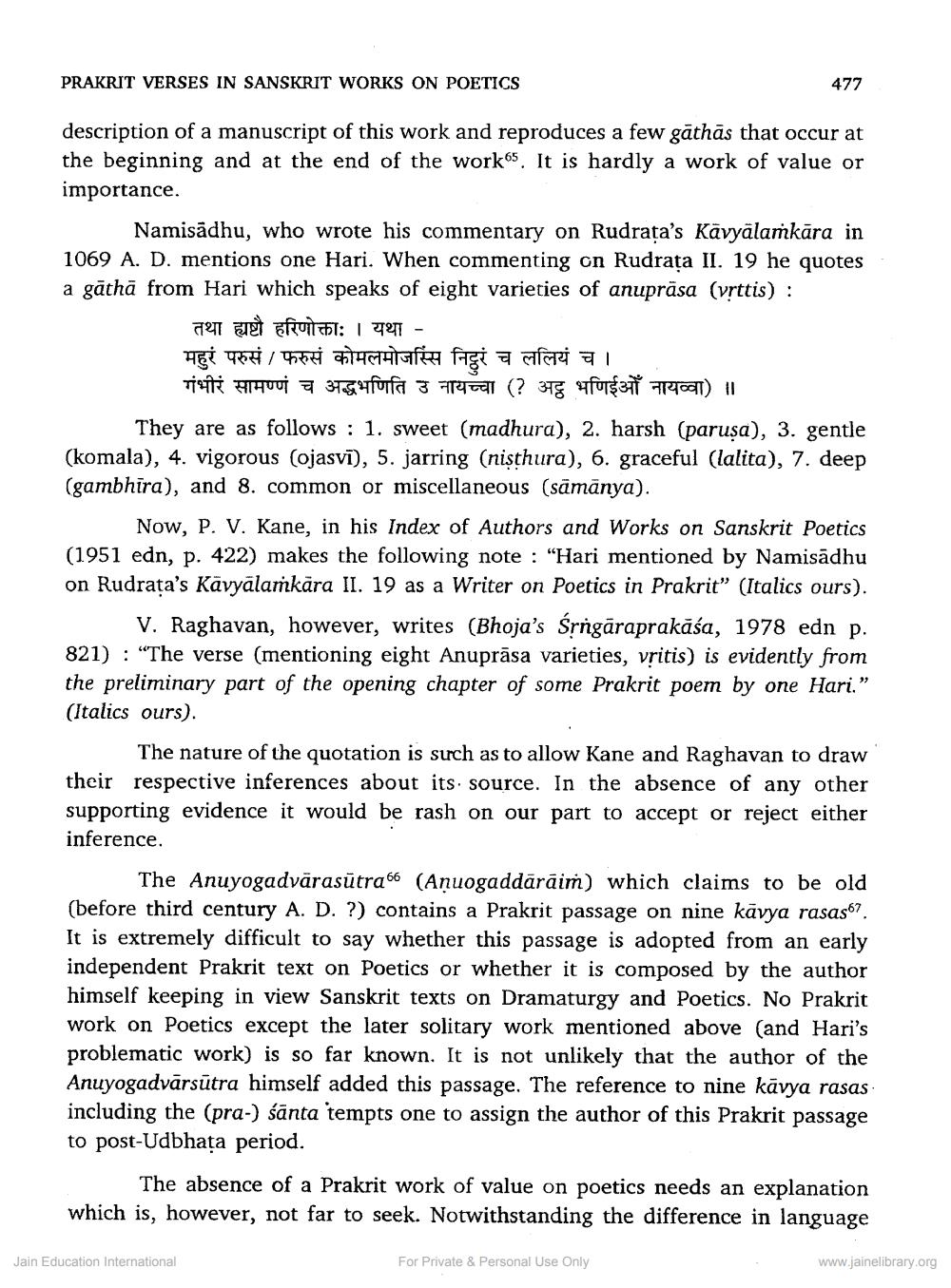________________ PRAKRIT VERSES IN SANSKRIT WORKS ON POETICS 477 description of a manuscript of this work and reproduces a few gathas that occur at the beginning and at the end of the work65. It is hardly a work of value or importance. Namisadhu, who wrote his commentary on Rudrata's Kavyalamkara in 1069 A. D. mentions one Hari. When commenting on Rudrata II. 19 he quotes a gatha from Hari which speaks of eight varieties of anuprasa (vrttis) : 7911 et Eriuileht: | 77977 - महुरं परुसं / फरुसं कोमलमोजस्सि निट्ठरं च ललियं च / गंभीरं सामण्णं च अद्धभणिति उ नायच्चा (? अट्ठ भणिईओँ नायव्वा) // They are as follows : 1. sweet (madhura), 2. harsh (parusa), 3. gentle (komala), 4. vigorous (ojasvi), 5. jarring (nisthura), 6. graceful (lalita), 7. deep (gambhira), and 8. common or miscellaneous (samanya). Now, P. V. Kane, in his Index of Authors and Works on Sanskrit Poetics (1951 edn, p. 422) makes the following note : "Hari mentioned by Namisadhu on Rudrata's Kavyalamkara II. 19 as a Writer on Poetics in Prakrit" (Italics ours). V. Raghavan, however, writes (Bhoja's Srngaraprakasa, 1978 edn p. 821) : "The verse (mentioning eight Anuprasa varieties, vritis) is evidently from the preliminary part of the opening chapter of some Prakrit poem by one Hari." (Italics ours). The nature of the quotation is such as to allow Kane and Raghavan to draw their respective inferences about its source. In the absence of any other supporting evidence it would be rash on our part to accept or reject either inference, The Anuyogadvarasutra 66 (Anuogaddaraim) which claims to be old (before third century A. D. ?) contains a Prakrit passage on nine kavya rasas67. It is extremely difficult to say whether this passage is adopted from an early independent Prakrit text on Poetics or whether it is composed by the author himself keeping in view Sanskrit texts on Dramaturgy and Poetics. No Prakrit work on Poetics except the later solitary work mentioned above and Hari's problematic work) is so far known. It is not unlikely that the author of the Anuyogadvarsutra himself added this passage. The reference to nine kavya rasas including the (pra-) santa tempts one to assign the author of this Prakrit passage to post-Udbhata period. The absence of a Prakrit work of value on poetics needs an explanation which is, however, not far to seek. Notwithstanding the difference in language Jain Education International For Private & Personal Use Only www.jainelibrary.org




